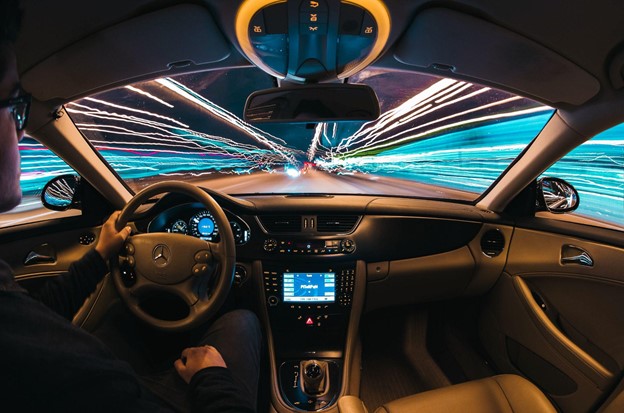Machine learning experts are revolutionizing the world of transportation. Even though self-driving cars get most of the press, machine learning algorithms are also used to develop advanced driver assistance systems (ADAS). Driver assistance systems are helping drivers avoid common human errors.
Your car’s automatic emergency braking, blind-spot detection, lane correction, and pedestrian detection are examples of driver assistance systems. Machine learning experts apply machine learning and deep learning algorithms to visual and sensory information obtained from the car’s sensors and cameras to develop ADAS applications and improve driving safety.
Levels of Vehicle Autonomy: What It Means for Driver Assistance Systems
Driver assistance systems are steppingstones to developing self-driving capabilities. Automotive experts have developed a system to define various levels of vehicle autonomy or self-driving capability. According to the Society of Automotive Engineers (SAE), autonomous vehicles have six levels of vehicle autonomy:
- SAE Level 0 (No Driving Automation): Drivers have complete control of the vehicle. Any safety features at this level only provide warning with momentary assistance.
- SAE Level 1 (Driver Assistance): These systems can support steering or brake/acceleration under the driver’s supervision. Level 1 systems don’t control steering and speed at the same time.
- SAE Level 2 (Partial Driving Automation): At this level, a car’s steering and speed can be controlled by the application simultaneously, but only under supervision.
- SAE Level 3 (Conditional Driving Automation): Features at this level allow a car to drive itself when certain conditions are met. For example, navigation in a traffic jam. But the car might ask the driver to take over control if conditions are not ideal.
- SAE Level 4 (High Driving Automation): A Level 4 vehicle might not even have steering and brake/accelerator pedals. Even though the car will not ask the driver to take over driving, it might still have limitations under certain conditions. For example, it might avoid driving on unfamiliar terrain.
- SAE Level 5 (Full Driving Automation): At this level, the car is fully automated and can self-drive under any possible condition.
The levels are a great way to understand a car’s capabilities. Machine learning experts might be more discerning about classifying a feature, but one can guess the level using the above SAE metrics.
For example, a car’s adaptive cruise control (ACC) takes over both the steering and speed of a vehicle, but the driver always has to be ready to take over driving. It means adaptive cruise control is a Level 1 feature. Most driver assistance systems are at this level, with some trying to crossover to level 2. Self-driving capabilities come into play from Level 3.
Examples of Machine Learning-Based Driver Assistance Systems
Driver assistance systems are becoming standard in modern cars. Most luxury car brands like BMW and Mercedes have ADAS applications for their vehicles. Here are some ADAS systems that are dependent on machine learning:
Intelligent Parking
Parking in a tight spot is challenging. Machine learning experts have made enough progress to enable autonomous parking. While parking might seem like an easy problem to solve, each parking spot is distinct, and each car has different dimensions. Machine learning algorithms let a vehicle learn and adapt the skills necessary to park in a tight spot.
Predictive Maintenance
Cars have mechanical checks to ensure critical parts are operating correctly. Most modern vehicles have dashboard warning lights for engine, battery, coolant temperature, transmission temperature, tire pressure, brakes, taillights, etc. However, the warnings are reactive. They turn on only when things go wrong. Machine learning experts have built monitoring systems to predict problems. For example, a machine learning-enabled driver assistance system can monitor a car’s regular route and indicate when tires need to be changed. Predictive maintenance can increase the longevity of a vehicle and save a lot of trouble.
Traffic Sign Recognition
Self-driving cars need the ability to read traffic signs and signals to understand traffic blocks, construction, or speed limits. The images captured through cameras are not reliable enough. There might be graffiti on the sign, the sunlight might obscure the signal, or a variable message sign might be missing a letter. Machine learning algorithms are helping driver assistance systems figure out any missing information and make sense of complex traffic signs.
Adaptive Cruise Control
Adaptive cruise control systems use machine learning to understand a driver’s behavior and mimic it. Otherwise, drivers feel uncomfortable as the driving feels foreign. The use of machine learning to increase comfort for drivers shows that machine learning experts are using algorithms to go beyond drivers’ physical comfort. They are taking a holistic approach to develop self-driving features.
Driver Assistance Systems Show Glimpses of the Future
Today’s driver assistance systems are the building blocks for self-driving cars. Each automotive company is trying to figure out part of the puzzle. However, when the puzzle pieces fit together, we will have Level 5 self-driving cars.
Sidespin Group Can Help
At Sidespin Group, we can help with machine learning strategy. Please get in touch with our machine learning experts for consultation and advice on artificial intelligence and machine learning patent cases.

